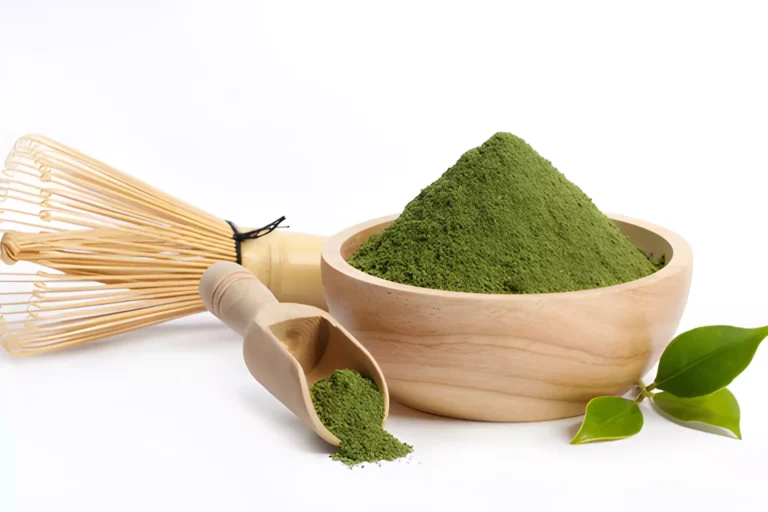Paprika vs Kashmiri Chilli Powder: What’s the Difference
If you love spicy food, you may have some paprika and Kashmiri chilli powder in your spice rack. These two red powders are widely used in various cuisines, especially Indian, to add color, heat, and flavor to dishes. But do you know what is the difference between paprika and Kashmiri chilli powder? Are they interchangeable? How do they affect the taste and appearance of your food?
In this article, we will answer these questions about paprika vs Kashmiri chilli powder. We will also compare paprika and red chilli powder in terms of their origin, ingredients, heat level, color, flavor, and uses. We will also give you some tips on how to choose and substitute them. So, let’s get started!
What is Paprika?
Paprika is a spice made from ground dried peppers, usually bell peppers or red peppers. It is native to Central Mexico, where the Aztecs cultivated it and later introduced to Europe by the Spanish explorers. It is mainly produced in Hungary, Spain, Turkey, and the United States.
Paprika has a bright red color and a mild and sweet flavor. It is mainly used for its color and aroma rather than its heat. It can enhance the appearance and taste of dishes like soups, stews, sauces, meats, eggs, cheese and potatoes.
What is Kashmiri Chilli Powder?
Kashmiri chilli powder is a spice made from ground dried red chillies, usually Kashmiri chillies or byadgi chillies. It is native to India, where it is grown mainly in the Kashmir region and Karnataka state. Kashmiri red chilli powder is widely used in Indian cuisine, especially in North Indian dishes.
This lal mirch powder has a deep red color and a mild to moderate heat level. It is mainly used for its color and aroma rather than its flavor. It can give a vibrant hue to dishes like tandoori chicken, biryanis, paneer tikka, rogan josh, and dal makhani.
Paprika vs Kashmiri Chilli Powder: Comparison
Now that we know what paprika and Kashmiri lal mirch powder is, let’s compare paprika vs Kashmiri chilli powder. Here is a table that summarizes the main differences between them:
| Features | Paprika | Kashmiri Chilli Powder |
|---|---|---|
| Origin | Central Mexico | India |
| Ingredients | Ground dried peppers, usually bell peppers or red peppers | Ground dried red chillies, usually Kashmiri chillies or byadgi chillies |
| Heat Level | Mild to moderately spicy, depending on the type | Mild to somewhat spicy, depending on the type |
| Color | Bright red to dark red, depending on the type | Deep red |
| Flavor | Mild and sweet to smoky and spicy, depending on the type | Sweet and fruity to pungent and earthy, depending on the type |
| Uses | For color and aroma, as well as flavor in some dishes | For color and aroma, as well as flavor in some dishes |
As you can see, paprika and Kashmiri chilli powder are not the same. They have different origins, ingredients, heat levels, colors, and flavors. They are also used differently in various cuisines.
How to Choose Paprika and Kashmiri Chilli Powder?
When buying paprika and red chilli powder, you should look for some factors that indicate their quality and freshness. Here are some tips to help you choose the best paprika and Kashmiri chilli powder:
- Check the label: The label should clearly state the type of paprika or Kashmiri chilli powder, the ingredients, the expiry date, and the country of origin. Avoid buying paprika or Kashmiri chilli powder that contains artificial colors, preservatives, or fillers.
- Check the color: The color of paprika or Kashmiri chilli powder should be bright and vibrant, not dull or faded. The color indicates the freshness and potency of the spice. If the color is too dark or too light, it means it is old or contaminated.
- Check the aroma: The aroma of paprika or Kashmiri chilli powder should be pleasant and fragrant, not musty or stale. The smell indicates the flavor and quality of the spice. If the aroma is too strong or too weak, it may mean that the spice is over-roasted or under-roasted.
- Check the texture: The texture of red chilli powder should be fine and smooth, not coarse or lumpy. The texture indicates the fineness and consistency of the spice. If the texture is too rough or too chunky, it may mean that the spice needs to be better ground or clumped together.
Alternatively you can make the red chilli powder at home. All you need is good-quality red chillies and a mixer or spice grinder.
How to Store Paprika and Kashmiri Chilli Powder?
Paprika and Kashmiri chilli powder can last for up to a year if stored properly. Here are some tips to store them correctly:
- Store them in an airtight container: This will prevent moisture, air, and light from affecting their quality and shelf life. Preferably use a glass or metal container, as plastic containers may leach chemicals into the spice over time.
- Store them in a cool and dry place: This will prevent heat and humidity from degrading their color, flavor, and potency. Avoid storing them near stoves, ovens, microwaves, or dishwashers.
- Store them away from direct sunlight: This will prevent UV rays from fading their color and reducing their freshness. Avoid storing them near windows or under fluorescent lights.
How to Substitute Paprika and Kashmiri Chilli Powder?
If you don’t have paprika or Kashmiri chilli powder at hand, you can substitute them with some other spices that have similar properties. Here are some suggestions for substituting paprika and Kashmiri chilli powder:
- To substitute paprika: You can use cayenne pepper, chili powder, ancho powder, or chipotle powder for heat; turmeric, saffron, or annatto for color; smoked salt, liquid smoke, or smoked cheese for smokiness; sweet paprika for sweetness; hot paprika for spice.
- To substitute Kashmiri chilli powder: You can use paprika, deggi mirch, cayenne pepper, or chili powder for color and heat; tomato paste, beetroot juice or red food coloring for color; tamarind paste, lemon juice, or vinegar for tanginess; Kashmiri garam masala, fennel seeds or cardamom for flavor.
These are some of the possible substitutes for paprika and Kashmiri red chilli powder, but you may need to adjust the quantity and taste according to your recipe and preference. You can also experiment with different combinations of spices to create your unique blend of paprika vs Kashmiri chilli powder.
FAQ’s
Conclusion
Paprika and Kashmiri chilli powder are two different spices that have different origins, ingredients, heat levels, colors, and flavors. They are also used differently in various cuisines. However, they both have some common properties, such as enhancing the color and aroma of dishes, as well as adding some heat and flavor. You can choose, store, and substitute them according to your needs and availability.
We hope this article has helped you understand the difference between paprika and Kashmiri chilli powder, and how to use them in your cooking. If you have any questions or comments, please feel free to share them with us below. And if you liked this article, please share it with your friends and family who love spicy food. Happy cooking!




